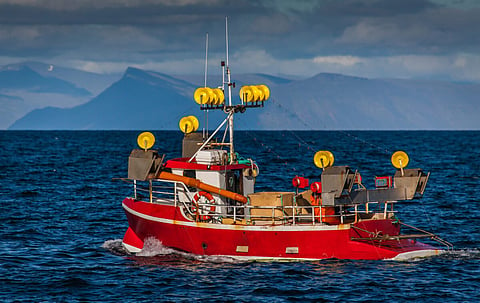Fishing boat on mackerel fishing near the southwest coast of Iceland.
Adobe Stock
Icelandic fish catch in 2023: almost 1.4m tonnes, 3% less than in 2022
Statistics Iceland has published that the total fish catch of Icelandic vessels in 2023 was 1,379 thousand tonnes, 3% less than in 2022. The only species that has increased in catch is the flatfish, 10% more than the previous year.
On the other hand, the pelagic catch was 946 thousand tonnes, 1% less than in the previous year. Demersal catch was 403 thousand tonnes, 7% less than in 2022, and shellfish catch was 6 thousand tonnes, 6% less than in 2022.
In December 2023, the total catch was 46 thousand tonnes, marking a 4% decrease from December 2022. Within the month, demersal catch rose to 27 thousand tonnes, while pelagic catch reached approximately 18 thousand tonnes.
The catch in December 2023 was 46 thousand tonnes, a 4% decrease compared with December 2022. Demersal catch in the month was 27 thousand tonnes and pelagic catch was about 18 thousand tonnes.
We should remember that the country declared in November a state of emergency due to volcanic activity by the Fagradasfjall volcano in the Reykjanes Peninsula.
Several companies confirmed to WeAreAquaculture that they were unaffected by the volcanic activity, but that their thoughts were with the local people caught up in the crisis.


